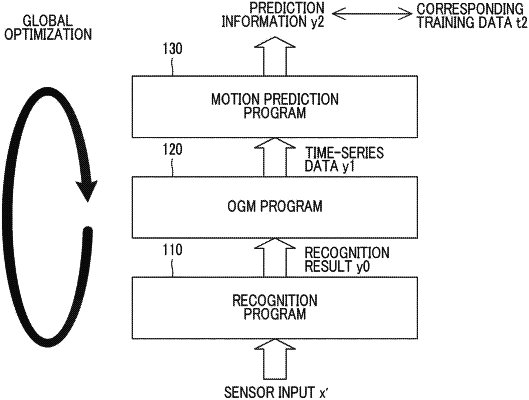| CPC B60W 40/04 (2013.01) [B60W 10/04 (2013.01); B60W 10/20 (2013.01); B60W 30/0956 (2013.01); B60W 50/0097 (2013.01); G05D 1/0088 (2013.01); G05D 1/0212 (2013.01); G05D 1/0214 (2013.01); G05D 1/0223 (2013.01); G05D 1/0246 (2013.01); G05D 1/0257 (2013.01); G06N 3/044 (2023.01); G06N 3/08 (2013.01); G06N 7/01 (2023.01); B60W 10/06 (2013.01); B60W 10/08 (2013.01); B60W 2050/0002 (2013.01); B60W 2400/00 (2013.01); B60W 2420/42 (2013.01); B60W 2420/52 (2013.01); B60W 2556/00 (2020.02); B60W 2710/0666 (2013.01); B60W 2710/20 (2013.01); B60W 2754/10 (2020.02); G05D 2201/0213 (2013.01)] | 17 Claims |

|
1. A vehicle comprising a sensor, an engine, an electronic control unit that is configured to execute a first program, a second program, and a third program,
the first program being configured to recognize an object present around a vehicle,
the second program being configured to store information related to the object recognized by the first program as time-series map data, and
the third program being configured to predict a future position of the object based on the time-series map data stored by the second program;
wherein the first program and the third program are configured to be
(i) first, individually optimized based on first training data corresponding to output of the first program and second training data corresponding to output of the third program, the output of the first program being based on an input of the sensor, and
(ii) then, collectively optimized by comparing an output of the third program to a different second training data based on a second input of the sensor,
wherein the third program is configured to predict the future position of the object using a behavioral habit of the object that is determined from the time-series map data,
wherein the electronic control unit is configured to set a traveling schedule of the vehicle based on the future position of the object predicted by executing the third program, and
wherein the electronic control unity is configured to control an operation of the engine of the vehicle based on the set traveling schedule.
|